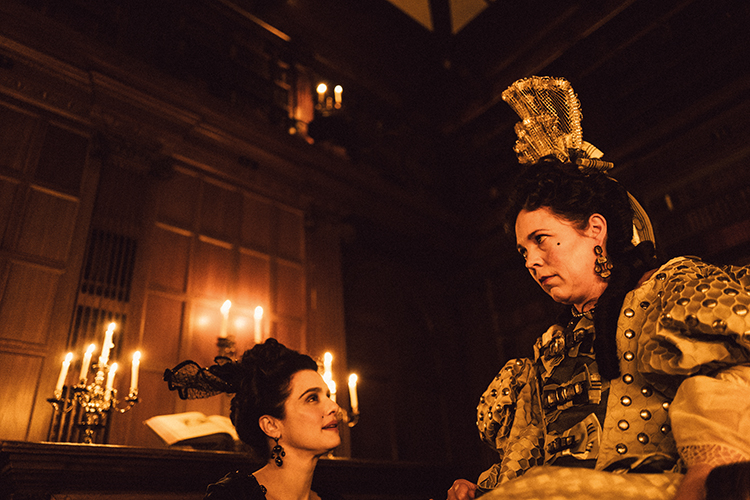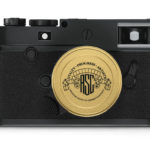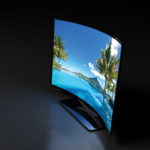
Frock Horror
Posted on Feb 18, 2019 by Alex Fice
Words: Phil Rhodes / Pictures: Fox Searchlight
Even before its UK release on the first day of 2019, The Favourite was a front-runner on the awards circuit, with 14 nominations in the Critics’ Choice Awards and ten wins from 12 nominations at the British Independent Film Awards. One of those awards was for the cinematography of Robbie Ryan, BSC, ISC, whose involvement with the film begins all the way back in 2016.
Robbie discussed The Favourite during a day off in Spain, far from the chilly UK where the film was shot and finished. “I’ve been doing it a long time,” Robbie begins. “I started in my teens, making short films, then went to film school and followed where it was taking me.”
That was in 1993. Since then, Robbie’s credits have grown to include a varied mix of documentary, shorts and drama, perhaps most notably including three of Ken Loach’s films (I, Daniel Blake, The Angels’ Share and Jimmy’s Hall) and the 2013 film Philomena, directed by Stephen Frears.


Dark Comedy
The Favourite can be fairly described as a particularly dark sort of comedy. Set in the early eighteenth century, during a long period of Anglo-French rivalry, the story follows Queen Anne (Olivia Colman) during the infirmity of her last years on the throne. Given the Queen’s illness, her authority is effectively wielded by Lady Sarah (Rachel Weisz) who falls into competition with a recently arrived member of the household staff, Abigail, played by Emma Stone.
The film was directed by Yorgos Lanthimos and shot in early 2017, though actually Robbie’s involvement predates the start of principal photography by more than 12 months.
“I was involved with it in 2016, then the casting went a bit awry and they had put it on hold for over a year. The one he wanted to hold out for was Olivia Colman because he was convinced she could be the queen.” Lanthimos, Robbie says, is not a filmmaker that easily cedes creative control. “The execs might have said that we couldn’t get them all together at one time, but Yorgos is not good at making compromises.” With the ideal cast of Colman, Weisz and Stone in place, the production shot from 20 March to 13 May, a 40-day shoot – and on film.
“I’ve been lucky,” Robbie says. “Out of the last five features, four of them have been on film. This one I’m on now is the first time I’ve done a digital feature in a couple of years.” He accepts that a track record in the medium helps: “because you shoot on film, maybe people get in touch with you. I thoroughly enjoy shooting on film, and I think the productions are enhanced by it.”

”I thoroughly enjoy shooting on film, and I think the productions are enhanced by it.”

Living in Dailies World
“When we were getting rushes back every day, the lab had graded the rushes,” says Robbie. “One day, all the candelight came back pink. Yorgos and I were like, ‘what’s going on here? I don’t remember seeing pink candles!’ We got paranoid about whether it was something we did wrong. It turned out the grader had made a mistake, but for a couple of days we were scratching our heads as to whether it was a lens or the stock we’d used. You’re at the mercy of the person grading your dailies at 3am. You have to trust yourself with the fact that the film stock is a very, very good rendition. The colours that come back with film are so brilliantly distinct.”
Film stock
Robbie’s camera package came from Panavision, with the production mainly using Kodak’s 500T stock 5219. For particularly well-lit day exteriors, Robbie chose slower 200T or 50D stocks. The 50D was pull-processed two stops to offset bright light even more and to normalise the higher-contrast look of the slower stock with respect to the less contrasty 500T.
“The thing about 50D is that it’s a very contrasty stock, by pulling it you lose a bit of contrast but it made it very beautiful. [Lanthimos] actually likes the look of the 500T in daylight, as well,” Robbie recalls. “It had a touch of a colder feel to it – well, not necessarily colder, maybe, but it seems to be a good workhorse of a stock. It gives you good latitude.”
The choice of pull-processing a slow stock, rather than simply using ND filters, was practical. “We were shooting on very wide lenses,” Robbie continues. “The lens was too [physically large] to put a filter on it. They were Primo. We used a fisheye 6mm, quite an unusual lens, a 10mm and up to 100mm, but we mainly ranged between the 6mm, 10mm and 75mm a lot of the time. None of us had used the 6mm. We found it at Panavision and thought, ‘wow, that’s pretty wide’. [Lanthimos] said ‘that’s brilliant, I’ll have that!’ A lot of people watching the film now refer to that. It highlighted the absurdity of the situation.
Helpful Location
Wide lenses let the filmmakers make the best use of the production’s principal location, Hatfield House in Hertfordshire, which dates back to 1611. The house has been widely used as a filming location, perhaps mainly because it is privately owned and imposes rules that are different from those commonly applied to National Trust properties.
“The great thing about it was that it was a location that would let you light candles. A lot of National Trust properties don’t. They’re all wise to film shoots being disruptive and causing potential damage – the old adage is not to let a film shoot in your house, which is fair enough.” The filmmakers would take full advantage of the ability to (carefully) use candles, and the wide-angle approach was, Robbie feels, ‘very unique’. He says: “You got to see every inch of the house. The location had very big windows in all the rooms so they had this lovely natural daylight coming in, and these lovely dark walls and textured tapestries that took the light really well.”
It’s easy to see all of these choices as a determinedly traditional approach, especially given Lanthimos’ attitude to lighting. “He didn’t want to use any lights,” Robbie explains. “He would only use lights if he had to compromise his approach. Luckily, when we were filming, the weather was quite sunny and we didn’t end up using lights very much. [The film] is very naturally lit. I learnt a lot working with him. I would maybe have used a bit of something here and there, and his mindset is not to use lights at all because as soon as you do, you have to do corrections to fit it all in later on. That was a mantra, and it paid off.”
Limiting artificial lighting means limiting complexity, and Robbie says that Lanthimos’ approach to directing his cast, in particular blocking, took full advantage of the resulting flexibility. “He didn’t make them stand anywhere – he let them do what they wanted to do. It was interesting working with him and he’s very unconventional. He’s camera-savvy and knows exactly what the camera can do, but he wouldn’t impose that on his actors. There was never ‘stand here, do this, don’t move there’. Some actors like to do as many takes as they can and feel you can bring something to each take, but we didn’t do excessive amounts of coverage. He was very frugal with how he shot it.”

 Rachel Weisz and Emma Stone converse with the 1st Baron Masham, played by Joe Alwyn.
Rachel Weisz and Emma Stone converse with the 1st Baron Masham, played by Joe Alwyn.
“It was interesting working with Yorgos and he’s very unconventional. He’s camera-savvy and knows exactly what the camera can do.”
Film Stocks
“I’ve been talking to the guy from Kodak and he said that five years ago there were maybe 13 commercials shot on film,” explains Robbie. “It’s two or three hundred this year. [The revival] is director led. Yorgos solely wants to shoot on film for as long as he can get it. I’m happy if a director is driving to shoot on film, and I will be until they stop making it. Kodak has re-issued reversal. They’ve also re-released Ektachrome, which gives you the contrast, as does 16mm. Now, it’d be great if FujiFilm started making film again.”

Film Turnaround
Shooting film naturally implies overnight processing and a return to viewing dailies. Initially, Robbie saw a quick telecine of the material, which later would be re-scanned on Arriscan at Goldcrest for the final version of the film, though that quickly changed to viewing the actual 2K scans. “I don’t think they scanned it again for the grade. Rob Pizzey did the final grade – he said that they didn’t do a heck of a lot to it in post. The nice thing about shooting on film is that you don’t tend to do a lot of colour correction, because [it looks good] as it comes out of the tin.”
Rob himself, based at Goldcrest, graded in Resolve on a Barco DP4K-P projector. With Robbie unable to attend the three-week grade due to a scheduling conflict, Rob worked with director Lanthimos. He’s immediately enthusiastic about the production: “It was lovely to work on some film again. The way Yorgos works is very interesting. I graded another movie with him a year before, The Killing of a Sacred Deer, and we used the same approach. We kept it natural, we don’t use many secondaries at all, we try not to use much of the toolset. We tried to manipulate the colour using the primary colour correction – the blacks, the highlights – to create an interesting natural look.”
“Most of the film was shot in available light,” Rob continues. “There were hardly any lights at all – the night scenes were candlelight and needed a lot of candles. If you watch the movie, you’ll see what I mean. The blacks are really black on some of those night scenes, but it looks awesome. The night scenes are very rich, very warm, so automatically you’d back off the warm and dial it down a bit, put in desaturation, but it just didn’t look right. We tried to use a bit more of the toolset and it just looked fake. It didn’t look real, so we stripped the grade back and just went with how it came out of the can.” Unusually, there was no HDR delivery, given Lanthimos’ objections to the way an HDR grade looked.

Colour Corrector
One scene stands out in Robbie’s and Rob’s memories as requiring special attention from both the camera and colour departments. Robbie says: “There was a problem where we had to go back and shoot one scene differently. Five weeks later, spring had sprung so all the leaves were budding, while for the first time there was no greenery. I think it just cuts and you don’t notice it. There are bits in the sequence where you think ‘oh that’s a bit greener’, but otherwise you’re in the story. It’s also testament to Rob’s grading.”
“That required a lot more work in the grade,” Rob recalls. “That’s the one area of the film where we had to use the colour corrector to its full potential. Other than that, we tried to grade it quite organically. A lot of the films that I’ve worked on are not too stylised. Some of them require an awful lot of work to make them look natural. Robbie, for his part, appreciates both the naturalistic approach and the consistency of Lanthimos’ vision.”
Rob continues: “The best-graded films are the ones where you don’t see it, you don’t notice it, and that’s really the secret of being able to do good VFX or grading. So you don’t notice it and when you do, you think there’s something wrong.
“When you’re doing a film with Yorgos, he’s the guy who calls all the shots. In the true sense of the word, he’s a great director because he has great involvement in every facet of the film he’s making. “He’s the person everyone refers to. There’s no other outside involvement – that applies to everything: from casting to editing to final cut. In this day and age, this is a very precious and rare thing. You finally get a film that’s fully in the control of the director and everyone realises he knows what he’s doing.”
”The best-graded films are the ones where you don’t see it, you don’t notice it.”








